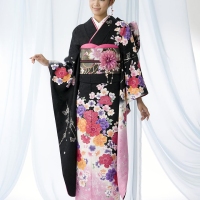Where to get your tasty skewered chicken fix in Tokyo
Best known as every Japanese oyaji‘s favourite beer snack, the humble yakitori (grilled, skewered chicken) is most commonly consumed in noisy pubs, at simple roadside stalls, or at various open-air festivals taking place year-round all over the country. However, the gourmet value of this simple delicacy is also widely recognised, best evidenced by the existence of Michelin-starred yakitori restaurants in Tokyo. Below, we have selected 10 of the best places in the city for getting your mouthwatering chicken-on-a-stick fix, ranging from friendly neighbourhood izakayas to splendidly sophisticated bird bars.
Located close to Sendagi Station, this tiny yakitori eatery caters to all friends of wine and/or nihonshu. Go for the standard menu (¥5,400, includes appetiser, skewers, and a main dish) or pick your favourites off the blackboard – menus change daily, with the birds being grilled ranging from duck to shamo chicken, and vegetable plates rotating seasonally. Choose your drinks from a wide selection of organic wines from France, Italy, and Japan, or make your pick from the equally impressive nihonshu lineup. The friendly owner is always ready to make recommendations and answer any questions about ingredients and preparation methods. Reservations required.
Details
Transport Sendagi Station (Chiyoda line), exit 1
Telephone 03 3821 2989
Open 6pm-10pm / closed Mon
Isehiro Kyobashi
Be it at lunch or at dinner, Kyobashi’s Isehiro will never let a yakitori lover down. The lunch bowl (yakitori-don) maintains the same high quality as the dinner courses (from ¥4,725), which allow visitors to taste a variety of chicken parts, all not only flavoured differently but also featuring different textures. We recommend the five-skewer bowl (¥1,800), which contains delicacies like liver and lean sasami breast.
Details
Transport Kyobashi Station (Ginza line), exit 6
Telephone 03 3281 5864
Open 11.30am-2pm, 4pm-9pm / closed Sun, holidays
Uchida
This tiny yakitori eatery in Musashi-Koyama often fills up right away after opening, making reservations highly recommended. The very reasonably priced yakitori (from ¥150) are outstanding, particularly the perfectly cooked livers and tsukune meatballs, which can be combined with a nice bottle from the shop’s expansive sake collection. If you’re ever strolling the area, do take a peek in to see if there are any seats available.
Details
Transport Musashi-Koyama Station (Tokyu Meguro line)
Telephone 03-5749-3455
Open 5pm-2am / closed Thu
Edomasa
Located along the row of one-man shops and wholesalers near the foot of Ryogokubashi bridge, Edomasa is a chicken-and-drinks bar that’s been a fixture in the neighbourhood for decades. Slip in through the curtain and find the counter right there – the tiny space fits only 12 patrons. Items from the shop’s early days are still in use, while the wall is decorated with hand-written notes from old-timer Sumo wrestlers. Nothing beats the ambience here.
Details
Transport Higashi-Nihonbashi Station
Telephone 03-3851-2948
Details
Transport Kinshicho Station (Hanzomon, Sobu lines), north exit
Telephone 03 3622 6202
Open 5.30pm-10.45pm (Sat from 5pm) / closed Sun, holidays
Ginza Torishige
This upscale joint in Ginza has been in business for over 80 years, and the experience shines through in their tsukunemeatballs, light-tasting quail skewers, and chewy duck dishes. Don’t forget to end your meal with a bowl of Torishige’s famous ‘dry curry’.‘Would you like dorai kare [curried rice] with that?’ the staff invariably ask customers when they place their first order at this upscale yakitori restaurant in Ginza. Trust us: just say yes.
Details
Transport Ginza Station (Ginza, Hibiya, Marunouchi lines), exit A2
Telephone 03 3571 8372
Open Mon-Fri 11.30am-2pm, 5pm-10pm, Sat 4pm-9pm / Closed Sun & hols
Iguchi
The standard course (¥4,800) is the only way to go at this Nakameguro bar, but it’s also most certainly the right way; starting with artistic appetisers and stretching all the way from small veggie bites to excellent chicken skewers, Iguchi takes yakitori to another level.
The black-and-white interior, topped off with a bonsai tree, is only part of the attraction at this Nakameguro yakitori bar. The standard course (¥4,800) is the only way to go here, but it’s also most certainly the right way; starting with appetisers ranging from foie gras and liver pâté to caciocavallo cheese and stretching all the way to small veggie bites and excellent chicken skewers, it’s hard to find anything wrong with this presentation taste-wise. Big eaters may leave slightly unsatisfied, but yakitori beginners will love the variety on offer. Reservations required.
Details
Transport Nakameguro Station
Telephone 03-6451-0575
Open Mon-Sat 6pm-midnight, Sun 4.30pm-midnight
Souten Minamiguchi
The can’t-miss dish at Otsuka’s famed Souten is the shiitake-flavouredtsukune meatball, a juicy and powerful creation that rises high above the standard. Adventurous diners might want to take a shot at the chicken sashimi plate with its symphony of textures.
Pick and choose off the massive menu at Otsuka’s famed Souten, an upscale yakitori eatery that lives up to its fancy reputation. One can’t-miss dish is the shiitake-flavoured tsukune meatball, a juicy and powerful creation that rises above the standard. The adventurous among us might want to order the chicken sashimi plate, which includes some truly mind-boggling offerings. Don’t forget to hang around and order a cup of nihonshu orshochu from the impressive drink selection.
Details
Transport Otsuka Station (JR lines), south exit; Mukohara Station (Toden Arakawa line)
Telephone 03 5944 8105
Open 5.30pm-11pm / closed Mon
Opened in summer 2013 in Yotsuya’s Arakicho, this small yakitori place has attracted quite a following in the past few months. The ‘tasting course’ (¥2,000) is great for first-timers, and features an impressive variety of juicy skewers that go perfectly with wine.
Among the many small bars and eateries in Yotsuya’s Arakicho, this small yakitori place has attracted quite a following in the past few months. Full courses are recommended, particularly the impressive 10-course ‘Yakitori menu’ (¥5,000). The ‘tasting course’ (¥2,000) is great for first-timers, and features an impressive variety of juicy skewers. Wine-drinkers might want to combine a crisp white with the liver pâté (¥700), another silky smooth creation.
Details
Transport Yotsuya-sanchome Station (Marunouchi line); Akebonobashi Station (Shinjuku line)
Telephone 03 5315 4630
Open 5pm-midnight
Onitei
Details
Transport Shibuya Station
Telephone 03-3797-1002
Open 6pm-11.30pm / closed Sun, holidays




































